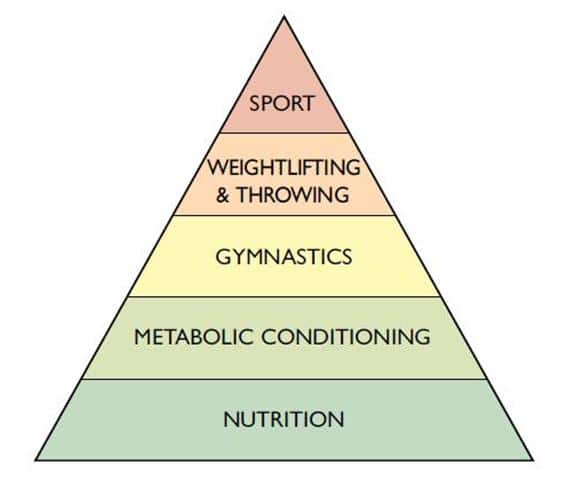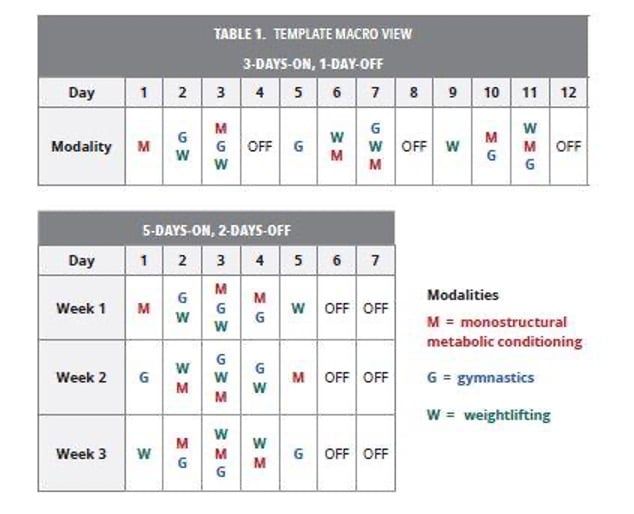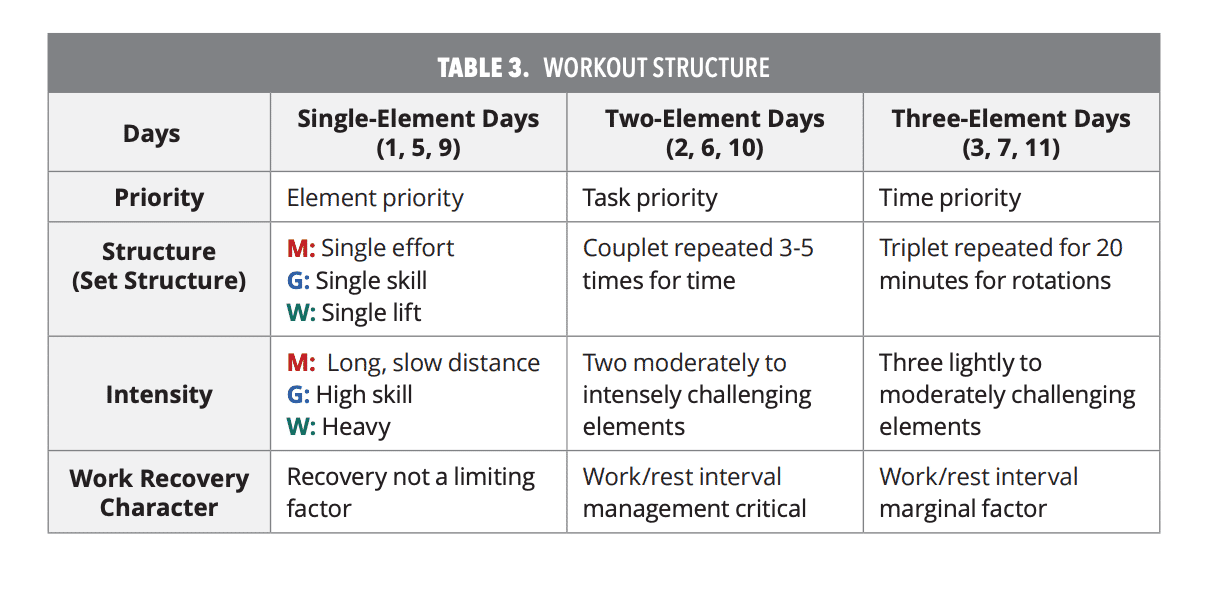27 de June de 2021
CrossFit Training Program For athletes
The CrossFit training methodology is here to stay. If you are here you probably need an extra boost in your workouts and you are looking for a training program for crossfit athletes because you want to reach the next level. Whether you have not started yet, have been in the box for several months or have trained for a couple of years, this article is for you. We will cover both the basic concepts and movements to the fundamentals of volume, intensity and programming. Let’s start with the basics:
What is CrossFit?
CrossFit is: “high intensity, constant variation functional movement”.
crossfit.com -CrossFit Level 1 Journal
The main objective of a training program for CrossFit athletes is to achieve a state of fitness as complete as possible based on high intensity and functional training as essential pillars. Unlike other modalities in the Fitness world such as bodybuilding , which focuses on purely aesthetic aspects, or at the other extreme weightlifting or powerlifting, with a single objective of lifting the maximum weight possible in a series of objectives. The training program for a CrossFit athlete will consist of a multitude of movements with very different sporting origins. Thus involving movement with universal, multiarticular, compound patterns whose execution starts from the central zone or “core” towards the extremities. Playing with the three main attributes that signal from CrossFit HQ (Load, distance and speed) the training schedule for CrossFit athletes can seem at first glance somewhat chaotic. For example, finding a maximum snatch lift one day and a 5-km running session the next day.

Weight-lifting, Gymnastics & Conditioning. The three fundamentals pillars of Crossfit Training.
Although the study in the scientific literature on this type of training may seem little compared to other modalities, this sport is very recent. We could begin to understand and name its benefits from an empirical perspective, based on real, measured and repeatable events, with users and addicts breaking records and achieving better fitness all over the world.
The CrossFit Athlete Training Program was created primarily to produce the best adaptive response in any type of physical task. With the main objective of improving performance in the 10 fitness domains: cardiovascular / respiratory endurance, stamina, strength, flexibility, power, speed, coordination, agility, balance and accuracy. If you are still wondering if this program is for you, chances are it is. I think it is highly recommended for all types of athletes or at least deserves a try on one occasion.
What systems are they based on?
- Aerobic: Energy is obtained in this way when oxygen is used to metabolize and release energy from food such as running on a treadmill for 20 minutes, swimming, or even watching TV.
- Anaerobic: When this energy is obtained from the substrates without the need for oxygen. For example, running 100 meters, doing squats or pull ups.
A CrossFit training program is presented as the perfect job to combine both routes.
The CrossFit Pyramid
One of the main foundations of this training is the pyramid that coach Greg Glassman has developed to make it clearer what principles CrossFit is based on.
At the base, therefore, the most important thing is nutrition. Eating right makes our machine work well and perform at its best during workouts. At the top we find metabolic conditioning (running, rowing, pedaling, jumping rope, etc.) capable of stimulating all energy systems (aerobic, anaerobic), just above we find the gymnastics that allows us to gain control of our body (perception, coordination and stabilization) and especially the “core”. In the penultimate box we find weightlifting and throwing exercises to increase strength and finally the practice of sport in general. This focuses the priorities of the methodology and therefore the importance and volume of each part of the pyramid.

Theoretical template for programing training for CrossFit athletes
As a first point we should say the type of weekly pattern that we are interested in following. For example, a typical pattern of 3 training days and 1 day off or training every day and resting completely on weekends. With this simple distribution, the three main modalities would be intertwined: Metabolic Conditioning, Gymnastics and Weightlifting.

On the other hand, as a simple example of periodization from CrossFit HQ, it presents this model of basic alternation of intensities:

Our recommendation
This approach is not wrong, as we already said, no routine is ideal. However, we can highlight several key points:
- The heaviest movement loads do not have progressive overload or correct discharge times. For the weightlifting block I would recommend more basic progressions like Greg Everett or other more weightlifting specialised author suggest.
- There is a clear shortage of analytical movements, not for mere aesthetic purposes, but rather to work on possible decompensations and even include periods or blocks of for example 10-12 weeks dedicated to hypertrophy in order to increase muscle mass and then work on power and increase maximum strength.
- Almost daily training at high intensity can have many contraindications, the main ones being that crossfit has a high rate of injuries, especially of shoulders, back and knee (injuries)
- Due to the difficulty of measuring fatigue, especially in strength training, estimating 1 RM per day with the Vitruve encoder could be the perfect answer to this problem. Allowing us to know precisely the% and load that we should work that day.
With this article we want to present the theory of current programming of a training program for crossfit athletes but more research is still needed in this field.
References
Murawska-Cialowicz E, Wojna J, Zuwala-Jagiello J. Crossfit training changes brain-derived neurotrophic factor and irisin levels at rest, after wingate and progressive tests, and improves aerobic capacity and body composition of young physically active men and women. J Physiol Pharmacol. 2015;66:811–21.
Glassman, G. (2004). What is crossfit. The CrossFit Journal, 56, 1-7.
Paine, J., Uptgraft, J., & Wylie, R. (2010). CrossFit study. Command and General Staff College, 1-34.
Hak, P. T., Hodzovic, E., & Hickey, B. (2013). The nature and prevalence of injury during CrossFit training. Journal of strength and conditioning research.
